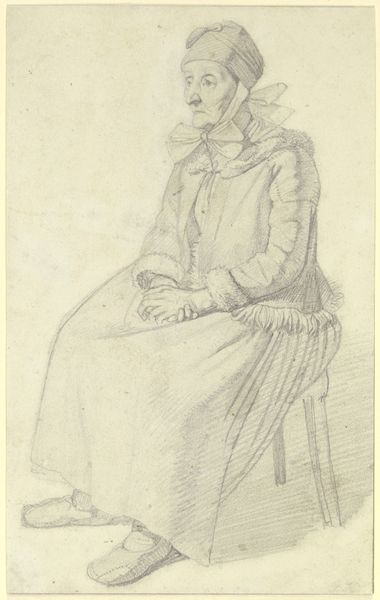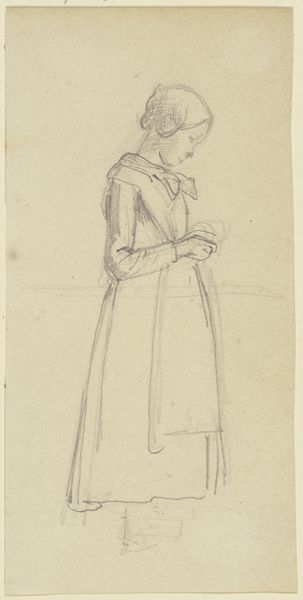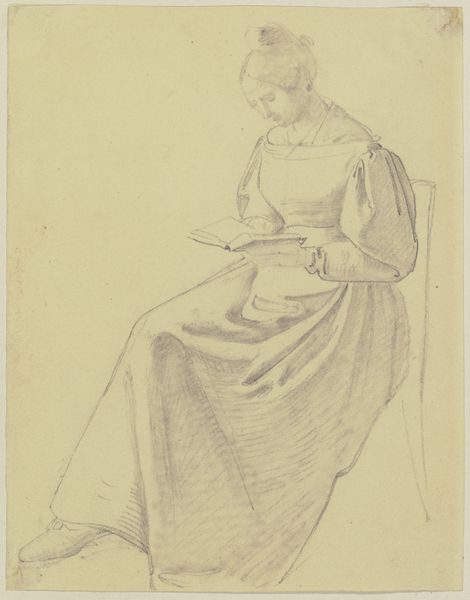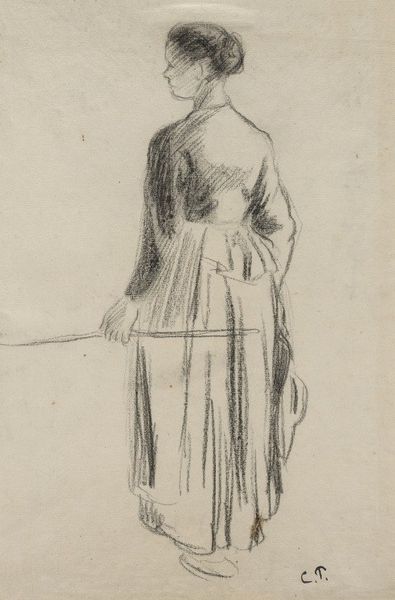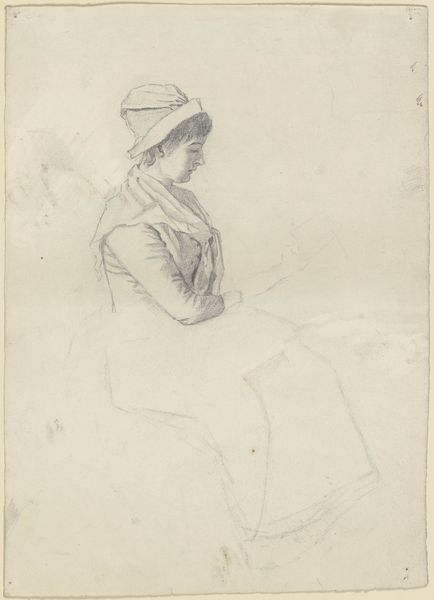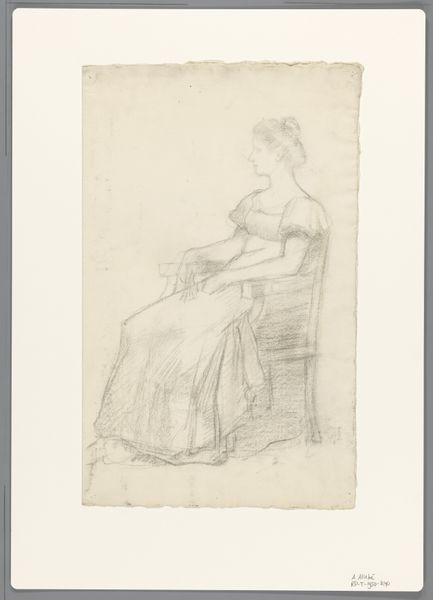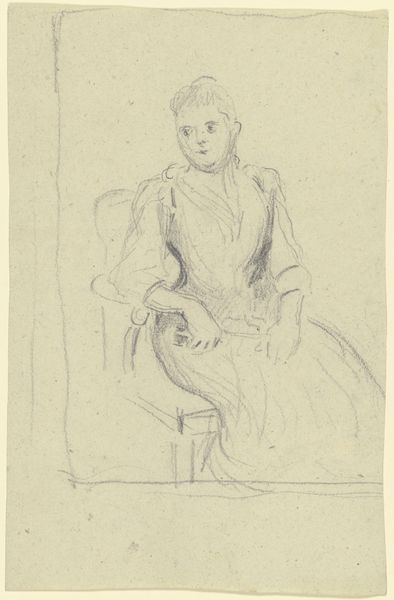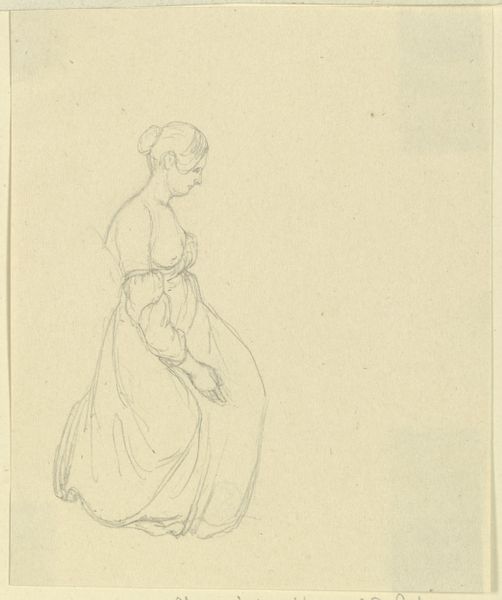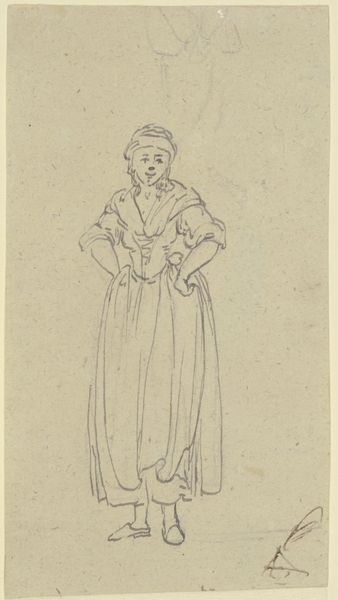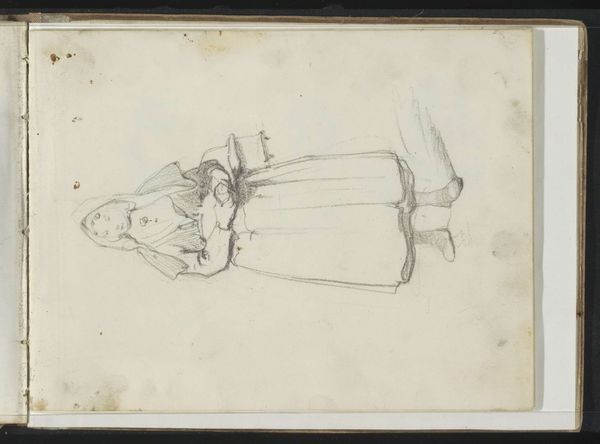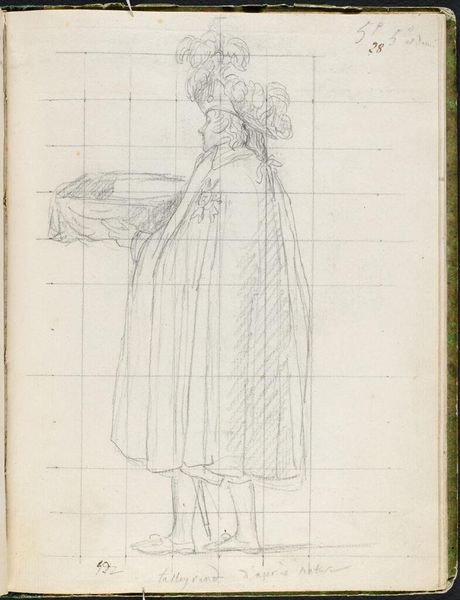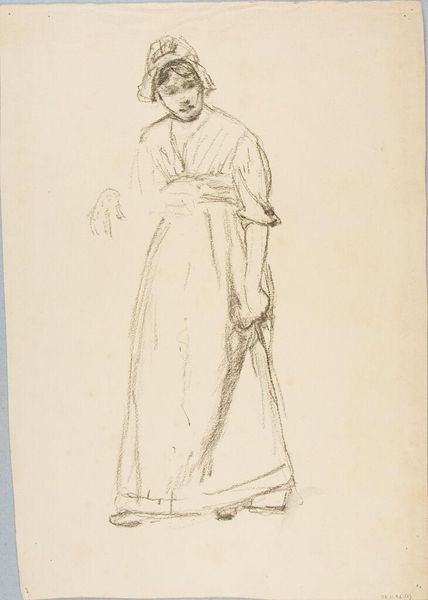
drawing, pencil
#
portrait
#
drawing
#
light pencil work
#
quirky sketch
#
impressionism
#
sketch book
#
landscape
#
personal sketchbook
#
idea generation sketch
#
sketchwork
#
pen-ink sketch
#
pencil
#
sketchbook drawing
#
storyboard and sketchbook work
#
sketchbook art
#
realism
Copyright: Rijks Museum: Open Domain
Jozef Israëls made this pencil drawing of a woman leaning on a horizontal beam, sometime in the late 19th century. Israëls was a Dutch painter known for his sympathetic depictions of working-class life. Here, the woman's plain dress and head covering suggest a life of labor and simplicity. The beam itself is a fascinating detail; it serves not only as a physical support for the woman but also as a visual barrier, perhaps hinting at the social constraints placed upon women in that era. Israëls was part of the Hague School, a group of Dutch artists who reacted against the academic style of the time, seeking instead to portray everyday life with realism and empathy. They were concerned with social issues and often depicted the lives of peasants and fishermen. Understanding this drawing fully means looking into the social and economic conditions of 19th-century Netherlands, researching the role of women, and exploring the visual culture of the Hague School. Art history is about placing images within a context, revealing the complex interplay between art and society.
Comments
No comments
Be the first to comment and join the conversation on the ultimate creative platform.
